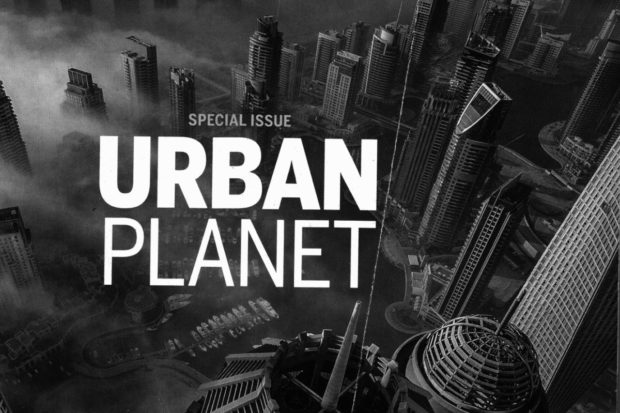
By George B. Kauffman
Our earth has become an urban planet. For the first time in history, more half of the world’s people live in cities, and this proportion is increasing. Furthermore, urban areas are sprawling even more rapidly than they are adding people swallowing up both and farmlands and wildlands.
The consequences of this situation are extremely serious. The area of land that is required to provide urban residents with food, energy, and materials is expanding. This area is often 200 times greater than the city’s area itself. The carbon emissions that result, when added to those from cities themselves, indicate that urbanization is now the main driver of climate change. In other words, it’s anthropogenic.
However, the increase in cities isn’t completely bad. By some measurements, consolidating human populations helps to decrease our individual environmental footprints. Our cities are acting as laboratories for additional improvements. Scientific researchers are seeking creative ways to harvesting urban waste streams, integrating renewable sources of energy, and improving transit.
One thing is eminently clear. The urban planet is here to stay. Cities represent the future. Rapid urbanization is overtaxing our planet. However, the decisions that we make today concerning how we build and live in cities will affect generations to come. The choice is ours, but considering the decisions that we’ve made in the past doesn’t offer me much hope.
Different places face different problems and are taking different steps to ameliorate the situation.
For example, the biggest challenge for Vancouver, the fastest growing metropolitan economy in Canada, in its quest to become the greenest city on the planet is to improve the energy efficiency of buildings because of leaky windows and poor insulation. Buildings consume nearly 2/3 of the energy used in the City of Glass — a nickname referring to Vancouver’s landmark towers offering stunning ocean and mountain views. Now, the city’s leaders have pledged to cut energy use and greenhouse gas emissions from existing buildings 20% by 2020 and to require structures built after 2030 to produce no net emissions. It’s part of a long-standing goal of fashioning a city that operates entirely on renewable energy and produces little waste. To cut methane emissions form its landfill, Vancouver strives to remove and compost all organic matter from its waste stream, producing a soil amendment.
In Brazil, a plague of rats indicates what may come in a more urban world. Rats haunt the slums of Pau da Lima, Brazil’s third largest city. Their paw prints surround drain pipes. Burrows pock dirt walls. Shriveled black feces speckle patio edges. The rodents even leave their mark in the blood of the people living here in a crowded favela on the city’s edge. Many residents carry antibodies for Leptospira, a bacterium found in rat urine that can be deadly to humans. The link between infection and water suggests that killing rats alone won’t be enough to protect Pau da Lima’s residents. People are very close to the sewage and very close to the rats, but if it could be done, a system that collects most of the water would avoid most of the infections.”
After decades of reckless growth, China is revising its vision. Beijing’s increasing private car ownership is contributing to air pollution, while compact walkable enclaves such as Guangzhou’s Xiaoqu are the new model for China’s city’s planners.
A special issue of the May 20 issue of Science, the flagship journal of the American Association for the Advancement of Science is devoted to Urban Planet: Cities are the Future by Nicholas S. Wigginton, Julia Fahrenkamp-Uppenbrink, Brad Wible, and David Malakoff; Vol. 352, Issue 6288, pp. 904-905; DOI: 10.1126/science.352.6288.904. A collection of reviews, perspectives, news features, and interactives can be found at http://scim.ag/1Tb0WdZ
*****
George B. Kauffman, Ph.D., chemistry professor emeritus at Fresno State and Guggenheim Fellow, is a recipient of the American Chemical Society’s George C. Pimentel Award in Chemical Education, the Helen M. Free Award for Public Outreach and the Award for Research at an Undergraduate Institution, and numerous domestic and international honors. In 2002 and 2011, he was appointed a Fellow of the American Association for the Advancement of Science and the American Chemical Society, respectively.
